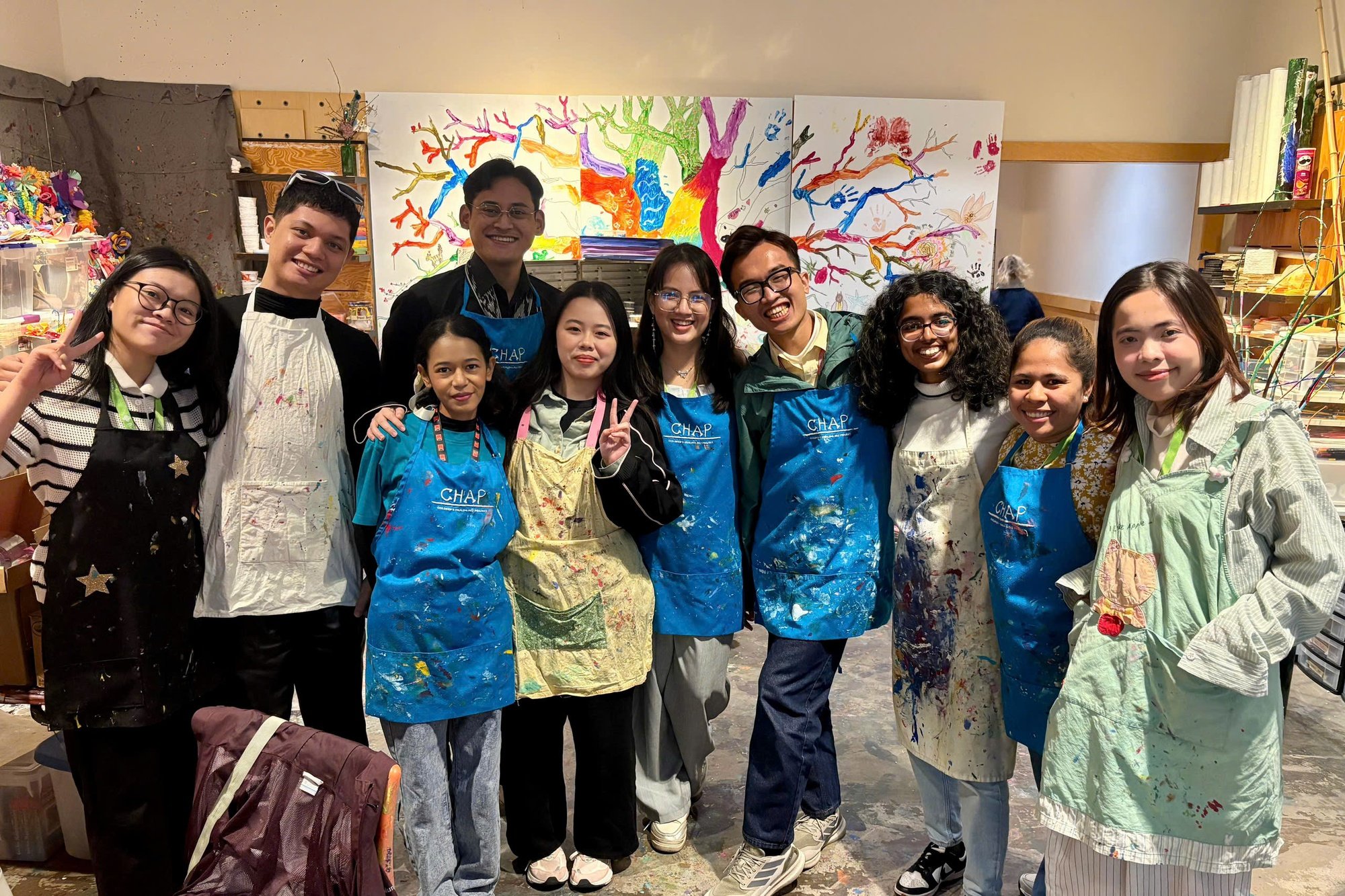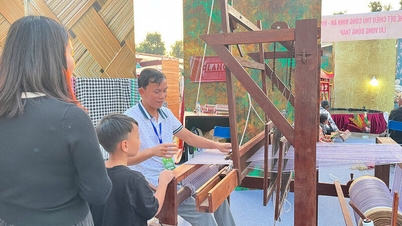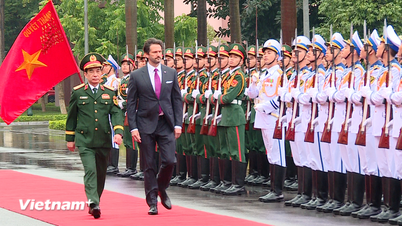But as artificial intelligence (AI) comes along and explodes, answers appear instantly with just a command. The challenge is how can teachers maintain the role of homework in this context?
STUDENT'S WORK, WHOSE ANSWERS?
As an English user, practice exercises help me consolidate the knowledge I have learned. Even up to now, I can still remember and present the content I learned in secondary school such as present tense or irregular verbs..., all thanks to a large part of homework, although sometimes boring. It can be said that exercises help me progress more on my journey to conquer the language.

The author presents reflections on the clear and unclear aspects of YSEALI program activities.
PHOTO: NVCC
When I started teaching English, exercises became a powerful tool for me to evaluate students' abilities. Through each written sentence, error, word usage..., I could identify gaps in knowledge, thereby shaping the content and teaching methods better. Therefore, I still deploy practice exercises during and after each lesson for students.
One thing I always tell my students is to limit the use of AI when doing exercises; at the same time, discuss and analyze the advantages and disadvantages of using AI to encourage students to actively think and form ideas. However, what makes me worry is that there are still answers that bear the mark of AI and completely lack personal effort.
For example, an average student got most of the vocabulary questions in the homework correctly. When I changed the questions and asked for feedback during the lesson, the student couldn’t connect and often forgot what he had learned. Furthermore, the way the student presented his work was similar to the AI feedback, such as bolding the answers in fill-in-the-blank questions.
In other cases, a fairly capable student may be able to fluently answer a homework assignment. It turns out that you drafted the answer first and then used AI to edit and record the speech. In class, the student sometimes hesitates and the answer is not fluent compared to the homework assignment.

Mr. Tuan (fourth from right) visits and learns at the Children's Healing Art Project (USA) - an art organization for children.
PHOTO: NVCC
Intuitively, I can conclude that the student's work has been intervened by AI and can even use tools to check. However, I do not arbitrarily raise the issue with my students because the students' turning to AI reflects many stories behind it: fear of not completing the assignment, fear of not having good ideas, lack of confidence in themselves and even reservations in front of the teacher and the class.
As a test taker, it is my responsibility to understand, address those concerns, and design more effective exercises, not to find mistakes.
TO LEARN AND PRACTICE
In the context of widespread AI application, the role and significance of exercises still remains. The problem is that the way to maintain and evaluate through exercises needs to be reshaped so that learners have space to actually learn and practice.
One possible approach is personalization. The task can be geared toward the learner’s experience, such as describing the first time they used an English learning app, or describing their study habits. I also ask students to record themselves at home to analyze the content and elements of what was said in class. In this way, the task becomes less about memorization and more about expression.
When "homework" is more than just homework
According to a study by Fatemeh Cheraghi and Mehrak Rahimi published in the journal SAGE Open in 2024, many scholars agree that homework is a powerful tool in improving English learners' abilities, especially thanks to its feature of helping learners practice every day.
Not only do exercises reinforce grammar and vocabulary, they also expand reading and writing skills and develop self-study habits. In the early stages, memorization exercises help learners master basic grammar and vocabulary. At higher levels, exercises shift to flexible application of skills, such as paragraph writing, reading comprehension, or text analysis.
Research also shows that personalized exercises, with feedback from teachers and real-life experiences help learners make more significant progress. In addition, recent studies have shown that exercises that involve discovery , projects or real-world practice increase motivation and language proficiency.
In other words, homework is not just a task but an opportunity to turn knowledge into skills, helping learners form thinking habits, so that they can truly live with the foreign language.
In an age where AI can quickly provide answers, assessment needs to move beyond the outcome and focus more on the process. I often suggest that students attach process notes, not to control but to help them reflect on their thinking, comparing the first version with the revised version. As students see progress through each stage, homework becomes an opportunity for reflection rather than an obligation.
I also advocate for more conscious use of AI. In most of my classes, I repeatedly ask students to clearly indicate which parts of their assignments they relied on AI for assistance. During homework corrections, I often spend time with students comparing the AI’s feedback with their own revisions to point out the pros and cons, and encourage them to not rely on AI.
After all, the relationship between AI and humans is inseparable, so it is better to guide learners to use this tool properly than to prevent it.
Ultimately, the most important thing for me is not to remove AI from the classroom, but to guide learners to retain the “human” part of the learning journey: curiosity, patience, and the joy of finding answers for themselves.
Source: https://thanhnien.vn/bai-tap-ve-nha-thoi-ai-185251114185159046.htm






































![[Photo] General Secretary To Lam and National Assembly Chairman Tran Thanh Man attend the 80th Anniversary of the Traditional Day of the Vietnamese Inspection Sector](https://vphoto.vietnam.vn/thumb/1200x675/vietnam/resource/IMAGE/2025/11/17/1763356362984_a2-bnd-7940-3561-jpg.webp)





































































Comment (0)